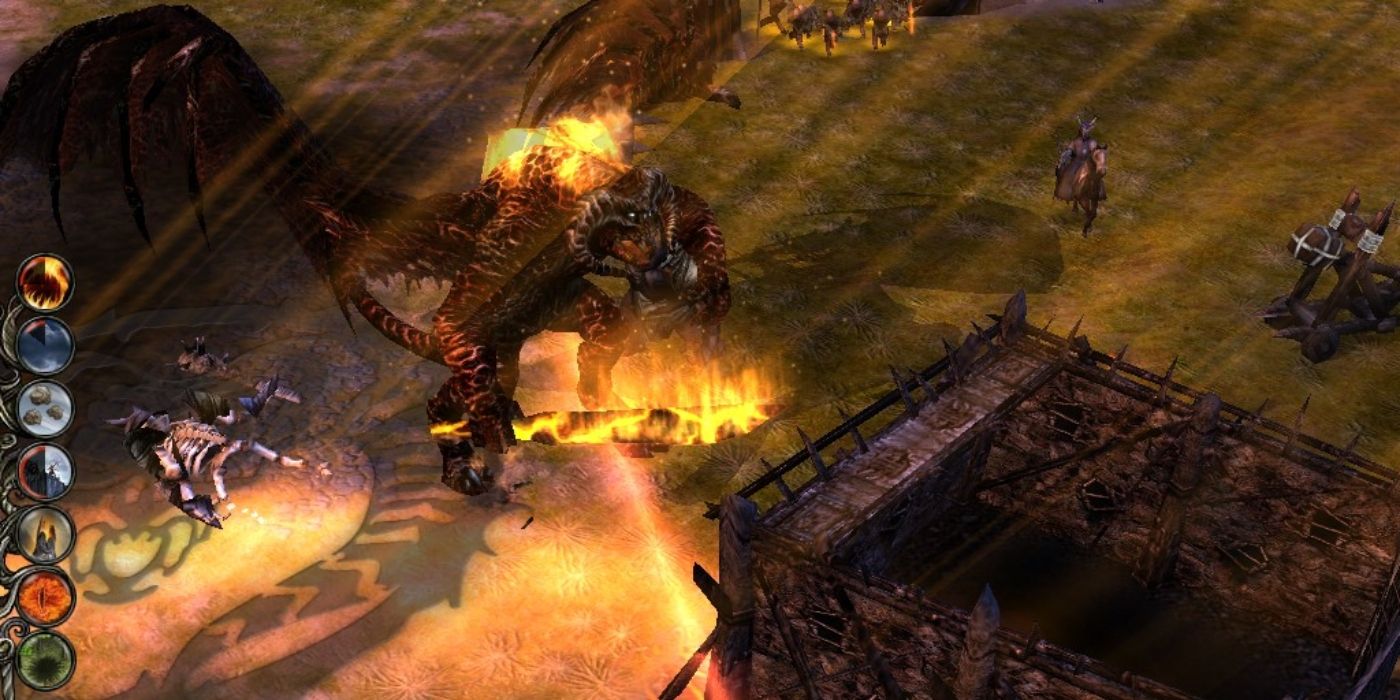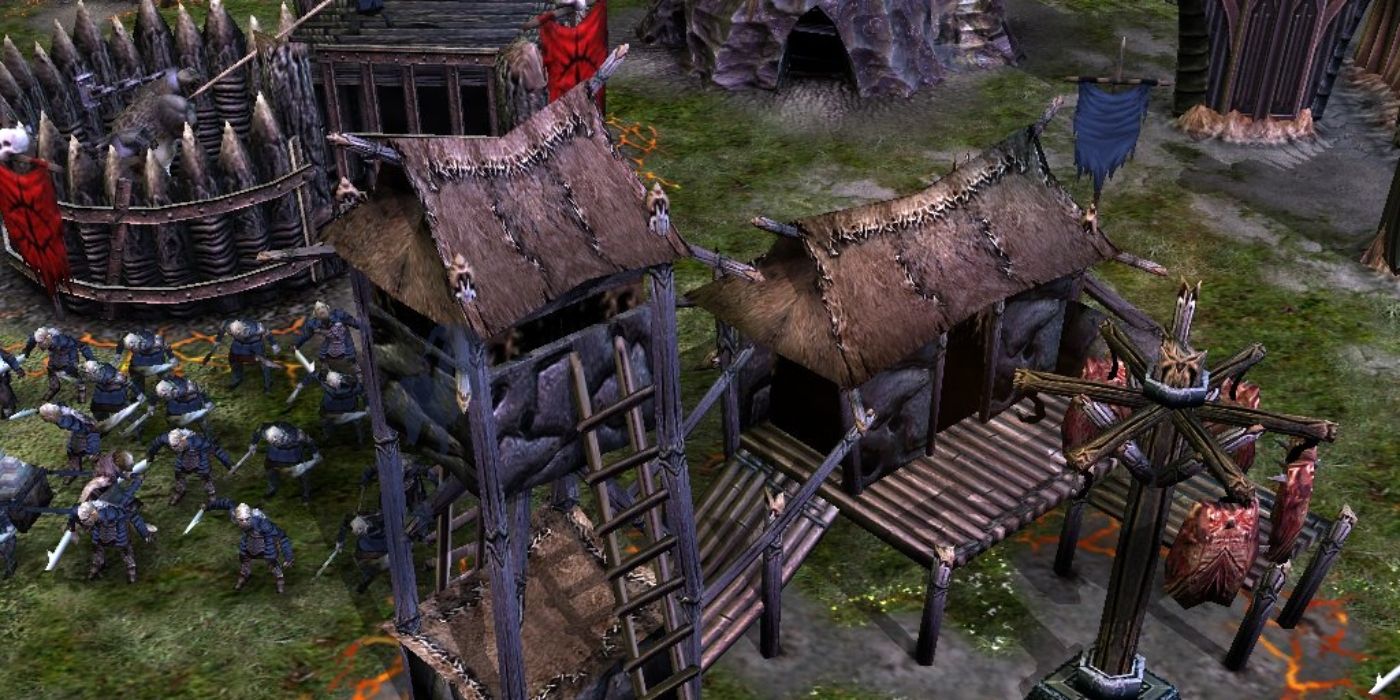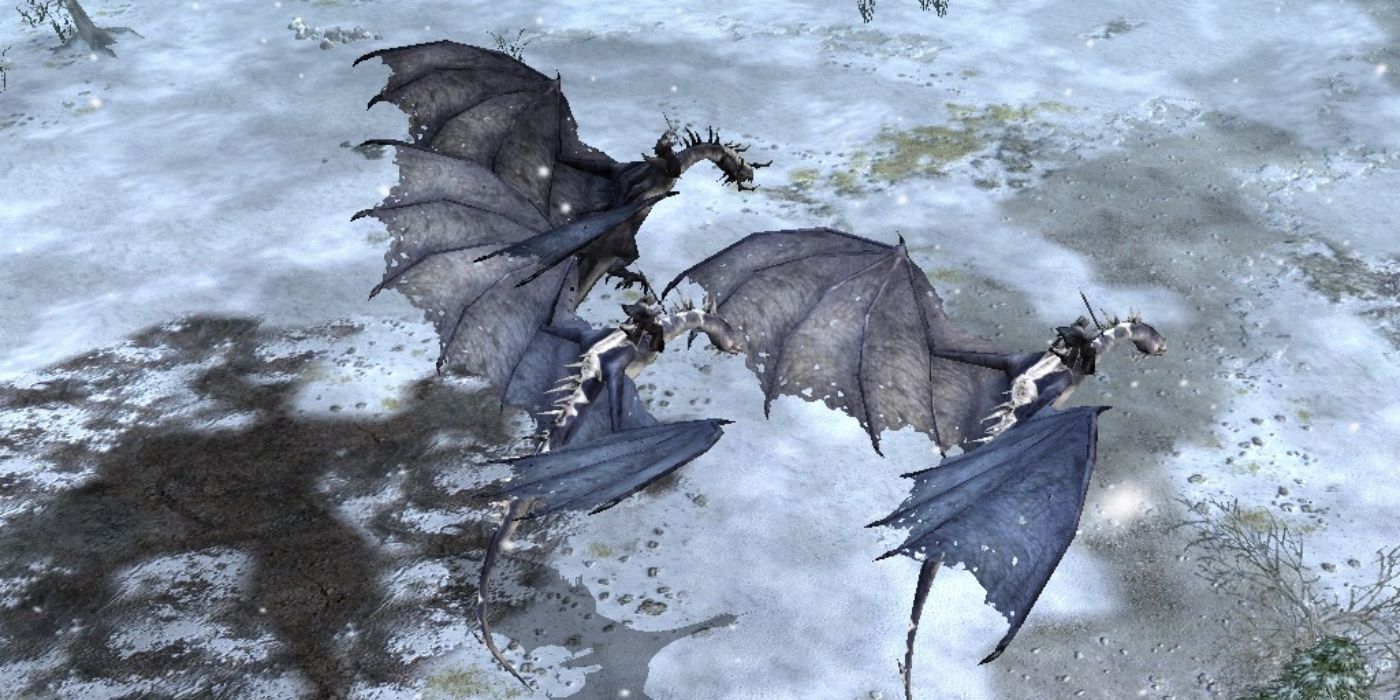Mordor is the most versatile evil faction in Electronic Arts’ Lord of the Rings: Battle for Middle Earth II: The Rise of the Witch-King expansion pack. They also boast one of the strongest armies for late game, bringing huge monsters, devastating catapults, and overwhelming hordes. The key to succeeding with Mordor is to distract and preoccupy the enemy forces of the good factions while simultaneously gaining map control and harvesting precious resources.
Having more resources at their disposal is paramount. This allows for a consistent spamming of orcs, the purchasing of hero units, upgrading production structures, and increasing the command point limit. As is the case in many of the best real-time strategy games, without a high command point limit, Mordor cannot field large enough armies to keep the other playable factions at bay, nor can their numerous swarms of orcs meet their maximum potential.
The most difficult aspect of playing Mordor in Battle for Middle Earth II is planning the early game. Before the ball gets rolling with resource structures and command points, orcs are largely outclassed by other factions. The faction’s more durable units like trolls or Nazgul are also too expensive at this point. Purchasing a Mountain Troll or Fellbeast only to lose it early will cripple Mordor’s economy, wasting valuable time and resources.
A Guide to Playing Battle for Middle Earth’s Mordor Faction
Reconnaissance and preparation are key with Mordor, and that’s where the Eye of Sauron comes in. Available at the start of the match, the Eye of Sauron can be used to scout out the enemy’s fortress and spy on what the AI is building. Much like the Far Sight ability for Battle for Middle Earth’s Elves faction, this intel provides Mordor the chance to respond accordingly, recruiting units that can beat out the enemy unit type in the game’s rock-paper-scissors combat.
If the enemy is producing warriors, counter with Orc Archers. If they are sending cavalry, recruit Easterling to halt them in their tracks. If they’re starting off with pikemen, swarm them with a couple of orc hordes and move the Eye of Sauron over to the skirmish to provide them with a leadership buff. An offensive play style is recommended with Mordor, as it keeps the enemy suppressed and too distracted to gain map control, but against the Hard or Brutal AI that may not be a choice. This makes for two valid opening strategies with Mordor.
Early survival defines a medieval RTS game, and opening with a rush is a classic distraction strategy for Mordor in Battle for Middle Earth II. The preferred tactic is to send both builders to a defensible location midway up the map. Ideally, this position is also near a capturable inn, signal fire, or monster to ‘creep’ kill. Immediately build two unit-producing structures (based in response to what the Eye of Sauron reports the enemy is building), and start making units right away. While they’re battling it out, the builders can start putting up slaughterhouses outward and gaining map control.
If setting up a forward base isn’t in the cards, the Mordor fortress is one of the strongest in the game, able to withstand everything but siege units all by itself. Players can use Orc Warriors to kite enemies towards the perimeter of the fortress, then dump magma cauldrons on them. Akin to Gandalf’s AoE abilities in BFME II, magma cauldrons can melt away entire armies in a couple seconds. Eventually, the player will need to push the offensive, at which point they should recruit Gothmog or the Mouth of Sauron. Either hero can effectively lead a small contingency of units along with a builder to set up a basic forward camp.
How To Battle With Rise of the Witch-King’s Mordor Faction
The best units to make at the forward camp in Battle for Middle Earth II are Mountain Trolls and Corsairs of Umbar. Both are cheap to produce, mobile, and survivable. Mountain Trolls can hurl rocks at enemy structures, whereas Corsairs of Umbar can switch to firebombs and burn them down at roughly the same speed. Corsairs can move around faster but are highly susceptible to enemy cavalry and archers. Attack Trolls can face off against Aragorn, Boromir, or other famous Lord of the Rings characters leading the Men of the West. Even the weaker Mountain Trolls have survivability. At low health they can eat orcs to regain health before resuming their bombardment.
Once the resources and command points are available, Fellbeasts and Attack Trolls should start supporting the main attack force. Mumakil or catapults can also be helpful, but both require the support of nearby units or heroes to ensure their survival. Keep the forward camp defended with Battle Towers, Tainted Land, and a hero unit or two, and it should be easy to keep up enough pressure to crush the enemy.
The Lord of the Rings Battle for Middle-Earth II: The Rise of the Witch-King is available on PC, PlayStation 4, Xbox One, Xbox 360, PlayStation 5, Xbox Series X/S, and Nintendo Switch.



